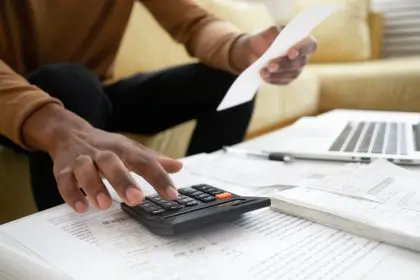Buying a house is a major financial milestone for many individuals and families. However, the down payment requirement can be a significant barrier. Fortunately, there are several strategies and programs available to help you buy a house with no down payment. This guide will explore various options to make homeownership more accessible.
Understanding no down payment options
Government-backed loans
Government-backed loans are one of the most common ways to buy a house with no down payment. These loans are designed to help individuals who may not have the financial resources for a large down payment.
- VA loans
- Eligibility: Available to veterans, active-duty service members, and certain members of the National Guard and Reserves.
- Benefits: VA loans require no down payment, no private mortgage insurance (PMI), and offer competitive interest rates.
- How to Apply: Contact a VA-approved lender to start the application process. You will need a Certificate of Eligibility (COE) to verify your service.
- USDA loans
- Eligibility: Designed for low-to-moderate income buyers in eligible rural areas.
- Benefits: No down payment required, and lower mortgage insurance premiums than conventional loans.
- How to Apply: Apply through a USDA-approved lender. You must meet income and location requirements.
Down payment assistance programs
Several state and local programs offer down payment assistance to help you buy a house with no down payment.
- State housing finance agencies (HFA)
- Eligibility: Varies by state, typically based on income, location, and first-time buyer status.
- Benefits: Grants, second mortgages, or forgivable loans to cover down payment and closing costs.
- How to Apply: Contact your state’s HFA or a participating lender for program details.
- Local government programs
- Eligibility: Often targeted at low-to-moderate income buyers and specific neighborhoods.
- Benefits: Grants, deferred loans, or matched savings programs.
- How to Apply: Check with your city or county housing department for available programs.
Alternative financing options
If you don’t qualify for government-backed loans or down payment assistance, alternative financing options exist.
Seller financing
Seller financing allows the seller to finance the purchase directly. This can eliminate the need for a traditional mortgage and down payment.
- Benefits: Flexible terms, potential for no down payment, and faster closing process.
- Risks: Higher interest rates, balloon payments, and less protection compared to traditional mortgages.
- How to Negotiate: Discuss seller financing options with the property owner and draft a detailed agreement with legal assistance.
Lease-to-own agreements
Lease-to-own agreements, also known as rent-to-own, allow you to rent a property with the option to buy it later. A portion of your rent payments goes towards the purchase price.
- Benefits: Time to save for a down payment, ability to lock in a purchase price, and opportunity to build credit.
- Risks: Higher rent, non-refundable fees, and potential loss of option money if you choose not to buy.
- How to Set Up: Negotiate lease-to-own terms with the landlord and ensure the agreement is legally binding.
Co-borrowing or co-signing
Having a co-borrower or co-signer with a strong financial profile can improve your chances of getting a loan without a down payment.
- Benefits: Enhanced loan approval prospects, potential for better loan terms, and shared financial responsibility.
- Risks: Strained personal relationships, shared liability, and credit impact on both parties.
- How to Approach: Discuss financial expectations with the co-borrower/co-signer and consult with a mortgage advisor.
Preparing for homeownership
Even if you secure a no down payment option, preparing for homeownership involves several steps.
Strengthening your credit score
A good credit score increases your chances of loan approval and better terms.
- How to improve: Pay bills on time, reduce debt, and avoid new credit inquiries.
- Monitoring tools: Use free credit monitoring services to track your progress.
Managing your finances
Effective financial management ensures you can handle monthly mortgage payments and other homeownership costs.
- Budgeting: Create a realistic budget that includes mortgage payments, utilities, maintenance, and other expenses.
- Saving for emergencies: Build an emergency fund to cover unexpected repairs and expenses.
Getting pre-approved
Pre-approval shows sellers you are a serious buyer and helps you understand your budget.
- How to get pre-approved: Submit financial documents to a lender, including income, assets, and credit information.
- Benefits: Streamlines the home buying process and provides a clear price range.
Conclusion
Buying a house with no down payment is possible through various programs and strategies. Whether you qualify for government-backed loans, down payment assistance, or explore alternative financing options, there are pathways to homeownership without the financial hurdle of a large down payment. By understanding your options, improving your financial health, and preparing for the responsibilities of homeownership, you can achieve your goal of owning a home.
With careful planning and the right resources, you can navigate the challenges and make your dream of homeownership a reality. Remember, each option comes with its own benefits and risks, so choosing the one that best suits your financial situation and long-term goals is important.
This story was created using AI technology.
















